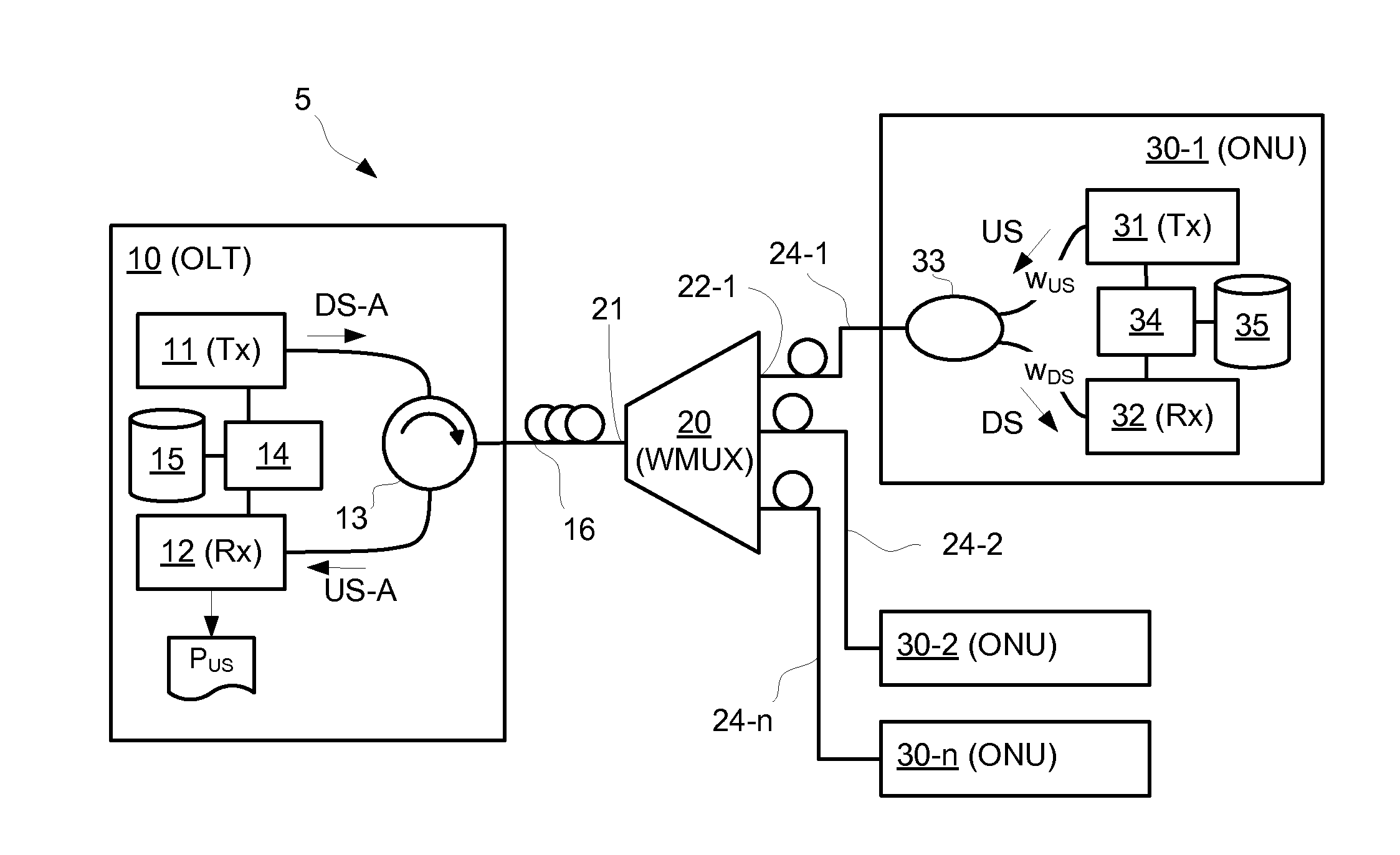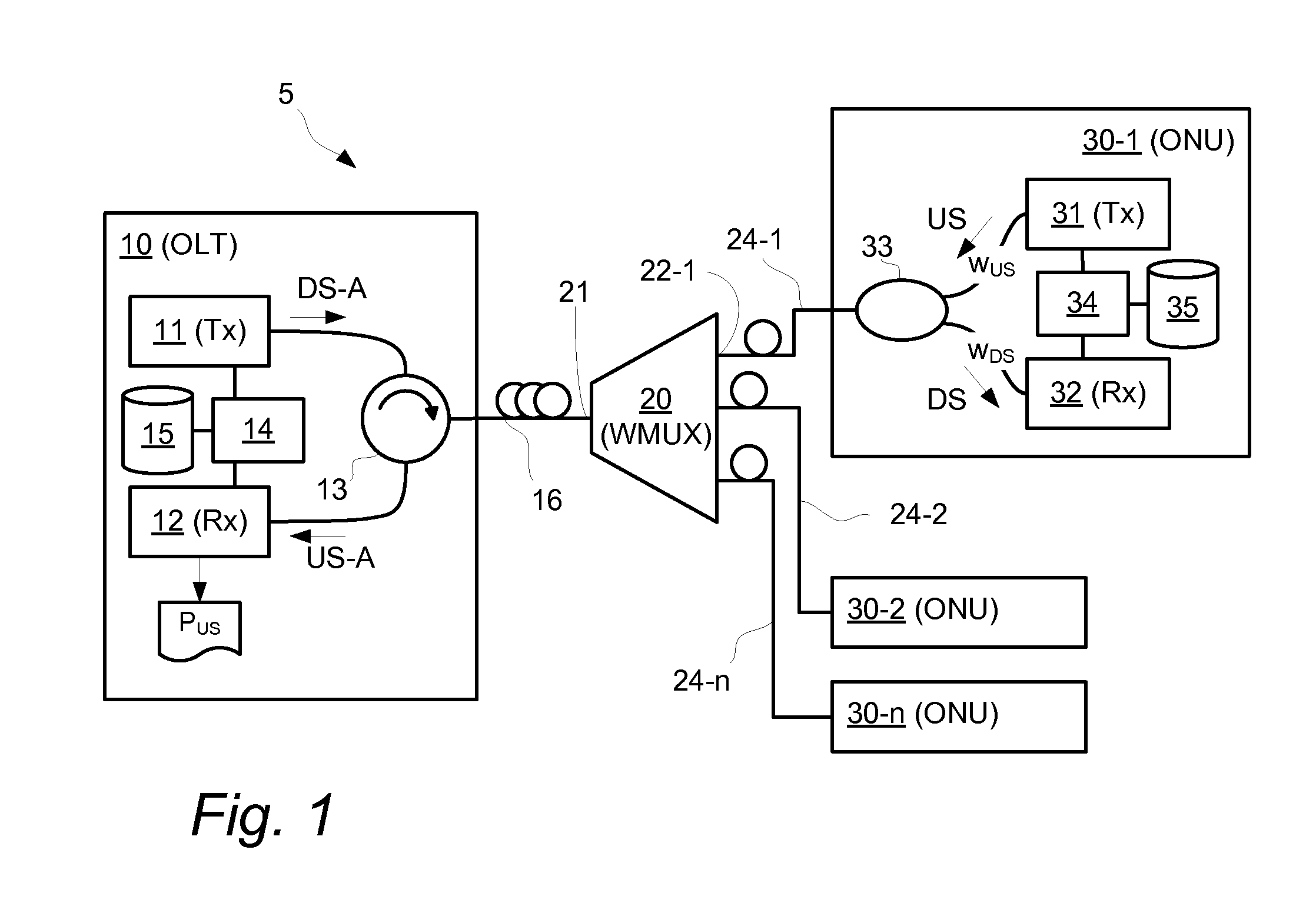Methods and Devices for Wavelength Alignment in WDM-PON
a wavelength alignment and wavelength technology, applied in the field of wavelength division multiplexing passive optical network, can solve the problems of inability to meet the requirements of a larger number of onus, inability to meet the requirements of a large number of onus, and inability to implement a large number of different, so as to reduce the work load on the optical line terminal
- Summary
- Abstract
- Description
- Claims
- Application Information
AI Technical Summary
Benefits of technology
Problems solved by technology
Method used
Image
Examples
Embodiment Construction
[0049]With reference to FIG. 1 a wavelength division multiplexing passive optical network (WDM-PON) system 5 is illustrated which relies on modulated downstream optical signals and a passive wavelength-division multiplexing splitter 20 in the form of an wavelength multiplexer (WMUX) that is able to perform multi-wavelength demodulation, such like an arrayed waveguide grating (AWG). The WMUX 20 functions simultaneously in the role of channel distributor and simultaneous demodulator for all channels directed over the WMUX 20. A bidirectional optical amplifier such as a saturated semiconductor optical amplifier (SOA) or erbium doped fiber amplifier (EDFA) (not shown) may be used for providing bidirectional amplification to compensate for possible losses.
[0050]The WDM-PON system 5 comprises an optical line terminal (OLT) 10 which typically is located at a provider premises. The OLT 10 performs the function of sending the downstream signals DS-A carrying data through an optical fiber 16 ...
PUM
 Login to View More
Login to View More Abstract
Description
Claims
Application Information
 Login to View More
Login to View More - R&D
- Intellectual Property
- Life Sciences
- Materials
- Tech Scout
- Unparalleled Data Quality
- Higher Quality Content
- 60% Fewer Hallucinations
Browse by: Latest US Patents, China's latest patents, Technical Efficacy Thesaurus, Application Domain, Technology Topic, Popular Technical Reports.
© 2025 PatSnap. All rights reserved.Legal|Privacy policy|Modern Slavery Act Transparency Statement|Sitemap|About US| Contact US: help@patsnap.com



